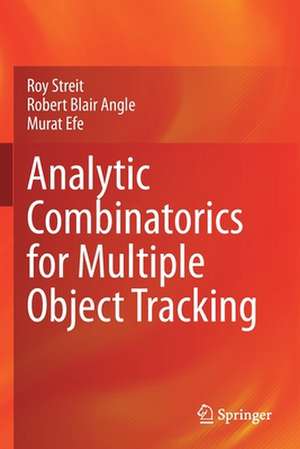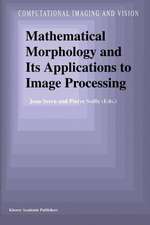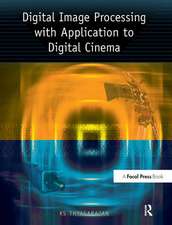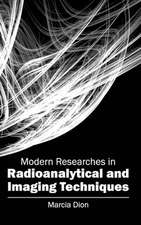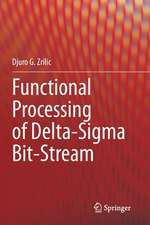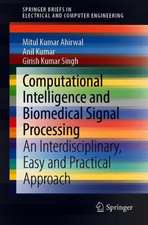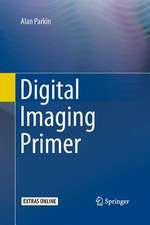Analytic Combinatorics for Multiple Object Tracking
Autor Roy Streit, Robert Blair Angle, Murat Efeen Limba Engleză Paperback – 27 noi 2021
| Toate formatele și edițiile | Preț | Express |
|---|---|---|
| Paperback (1) | 628.79 lei 38-44 zile | |
| Springer International Publishing – 27 noi 2021 | 628.79 lei 38-44 zile | |
| Hardback (1) | 784.48 lei 6-8 săpt. | |
| Springer International Publishing – 27 noi 2020 | 784.48 lei 6-8 săpt. |
Preț: 628.79 lei
Preț vechi: 827.36 lei
-24% Nou
Puncte Express: 943
Preț estimativ în valută:
120.32€ • 125.94$ • 100.14£
120.32€ • 125.94$ • 100.14£
Carte tipărită la comandă
Livrare economică 27 martie-02 aprilie
Preluare comenzi: 021 569.72.76
Specificații
ISBN-13: 9783030611934
ISBN-10: 3030611930
Pagini: 221
Ilustrații: XVI, 221 p. 16 illus., 15 illus. in color.
Dimensiuni: 155 x 235 mm
Greutate: 0.34 kg
Ediția:1st ed. 2021
Editura: Springer International Publishing
Colecția Springer
Locul publicării:Cham, Switzerland
ISBN-10: 3030611930
Pagini: 221
Ilustrații: XVI, 221 p. 16 illus., 15 illus. in color.
Dimensiuni: 155 x 235 mm
Greutate: 0.34 kg
Ediția:1st ed. 2021
Editura: Springer International Publishing
Colecția Springer
Locul publicării:Cham, Switzerland
Cuprins
Introduction.- Extended object tracking.- Multiple sensors.- Other high computational complexity tracking problems.- Multiframe assignment and combinatorial optimization.- Saddle Point Method.- Multicomplex Algebra.- Automatic Differentiation.- Conclusion.
Notă biografică
Dr. Roy L. Streit joined Metron in 2005. His research interests include multi-target tracking, multi-sensor data fusion, distributed autonomous systems, signal processing, medical imaging and statistical methods for pharmacovigilance and business analytics. His recent research involves applications of analytic combinatorics to data association problems in multi-target, multi-sensor tracking and to combinatorial optimization problems in natural language processing and common subgraph matching in high level fusion. Dr. Streit is a Life Fellow of the IEEE and a Senior Fellow at Metron. He is a co-author (with colleagues at Metron) of Bayesian Multiple Target Tracking, Second Edition, Artech House, 2014. He is the author of Poisson Point Processes: Imaging, Tracking, and Sensing, Springer, 2010. Both books have been translated into Chinese. He has published numerous scientific journal papers, book chapters, and invited and contributed papers at international conferences and workshops. He holds seven US patents. He was a NATO Science and Technology Organization Lecturer (SET-157, 2010-2012) on multisensor fusion and also (IST-134, 2015-2016) on advanced algorithms for fusing hard and soft information. He was an Invited Lecturer on radar and sonar tracking, Hanyang University, Ansan, Republic of Korea, 2014. He is currently on the Board of Governors of the IEEE Aerospace and Electronic Systems Society. He was President of the International Society for Information Fusion (ISIF) in 2012, and continues to serve on the ISIF Board of Directors. He is the founding Editor-in-Chief of the ISIF Perspectives Magazine. He served as General Co-Chair of the ISIF/IEEE Fusion Conference held in Xi’an, China, in 2017, Technical Program Co-Chair for the 2015 ISIF/IEEE Fusion Conference, Washington, DC, and General Co-Chair (with Murat Efe) for the 2013 ISIF/IEEE Fusion Conference, Istanbul, Turkey. He was the Awards Chair for the 2016 ISIF/IEEE Fusion Conference, Heidelberg, Germany. Prior to joining Metron, Dr. Streit was a Chief Research Scientist in the Senior Executive Service (SES) at the U.S. Naval Undersea Warfare Center (NUWC). The focus of his work was the development, evaluation and application of multi-sensor data fusion algorithms in support of submarine sonar and combat control automation. He initiated and led multi-disciplinary exploratory and advanced development efforts to demonstrate new and advanced capabilities for integrated target classification, detection, and tracking. He and his team proposed and developed novel multi-spectral multi-target tracking algorithms that were demonstrated on four major submarine passive sonar arrays. Dr. Streit served as Exchange Scientist at the Defence Science and Technology Organisation (DSTO) in Adelaide, Australia, from 1987–1989. He was a Visiting Scientist at Yale University, Computer Science Department, 1982-4; Visiting Scholar at Stanford University, Operation Research Department, 1981-2; and Visiting Scientist at Adelaide University, Statistics Department, Australia, 1989. He served from 1996–2005 on the Sonar Technology Panel of The Technical Cooperation Program (TTCP), a multinational governmental organization supporting scientific exchange between member nations. He received the Solberg Award from the American Society of Naval Engineers in 1999, and the Department of the Navy Superior Civilian Achievement Award in 2001.
Dr. Robert Blair Angle received his Ph.D. in mathematics from the University of California, San Diego, and is currently a Senior Research Scientist at Metron, Inc. Since joining Metron in 2008, he has worked as the technical lead on a variety of projects involving mathematical and statistical modeling, machine learning, tracking, simulation, signal processing, and software development. During his tenure at Metron, he has written or co-written several proposals which have led to new funding and research.
His current research involves multiple-object tracking, with a focus on applying analytic combinatorial methods to data association problems. He also currently works on the application of sparse modeling techniques to machine learning problems, e.g., signal classification and source separation.
As a graduate student, Dr. Angle’s research concentrated on two seemingly disparate areas of mathematics— his MS degree was in mathematics with a focus on combinatorics (including extremal finite set theory and partially ordered sets), while his Ph.D. research focused on several complex variables, specifically Cauchy-Riemann (CR) geometry. His interest in analytic combinatorics and its applications is quite natural, as AC is a beautiful example of the interplay between discrete mathematics and complex analysis.
In the years between his undergraduate and graduate degrees, Dr. Angle worked as a professional musician.
Dr.Murat Efe received his Ph.D. in Control Engineering from the University of Sussex at Brighton, UK. He then took up a lecturer position at Ankara University. Upon receiving an invitation, he joined the Automatic Control Institute of the Swiss Federal Institute of Technology in Lausanne (EPFL), Switzerland as a postdoctoral research fellow, where he worked for almost two years. He currently holds a full Professor position and is the Head of the Department of Electrical and Electronics Engineering at Ankara University. He has numerous papers published in refereed journals and conference proceedings and given many seminars on target tracking/data fusion. Dr. Efe was the local coordinator of the NATO Lecture Series on Multisensor Fusion that took place in Ankara, Turkey in 2012. He has been a technical consultant to a number of defense companies on tracking and fusion related projects and served on the advisory board of the Electrical, Electronics and Informatics Research Group of theScientific and Technological Research Council of Turkey. Dr. Efe has been a member of Technical Program Committees of International Society for Information Fusion (ISIF) Conferences for over a decade and he was the General Co-Chair (with Roy Streit) for Fusion 2013 that was held in Istanbul, Turkey 9-12 July 2013. He was elected to serve on the Board of Directors of ISIF for the terms 2014-2016, 2017-2019 and 2020-2022.
Dr. Efe recently established the Smart Technologies Research Center at Ankara University where data fusion meets data analytics and learning for AI. He is an Associate Editor for IEEE Transactions on Aerospace and Electronic Systems on Target Tracking and Data Fusion and was a lecturer for the NATO-CSO Lecture Series entitled “Radar and SAR Systems for Airborne and Space-based Surveillance and Reconnaissance” between 2013-2017. A total of 13 countries, namely Australia, Italy, UK, France, Spain, Germany, Romania, US, Canada, Portugal, Lithuania, Bulgaria and Poland were visited for these lectures. His primary research interests include: estimation, target tracking, data fusion, GPS denied navigation, localization, free space optical communication, and radar signal post processing.
Textul de pe ultima copertă
The book shows that the analytic combinatorics (AC) method encodes the combinatorial problems of multiple object tracking—without information loss—into the derivatives of a generating function (GF). The book lays out an easy-to-follow path from theory to practice and includes salient AC application examples. Since GFs are not widely utilized amongst the tracking community, the book takes the reader from the basics of the subject to applications of theory starting from the simplest problem of single object tracking, and advancing chapter by chapter to more challenging multi-object tracking problems. Many established tracking filters (e.g., Bayes-Markov, PDA, JPDA, IPDA, JIPDA, CPHD, PHD, multi-Bernoulli, MBM, LMBM, and MHT) are derived in this manner with simplicity, economy, and considerable clarity. The AC method gives significant and fresh insights into the modeling assumptions of these filters and, thereby, also shows the potential utility of various approximationmethods that are well established techniques in applied mathematics and physics, but are new to tracking. These unexplored possibilities are reviewed in the final chapter of the book.
Caracteristici
Presents an accessible guide to AC and GF written for engineers to address engineering problems Provides theory in an easy to understand manner and application of the theory to real life projects and solutions Describes GFs and their applications in a language that is familiar to engineers, with connections to optimal control and signal processing
